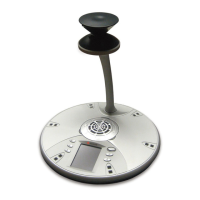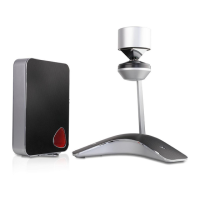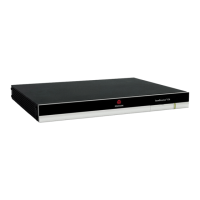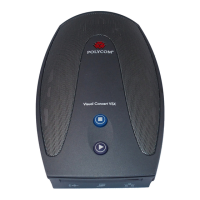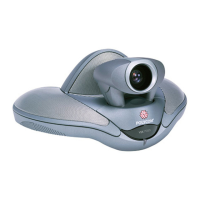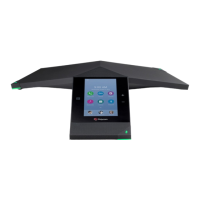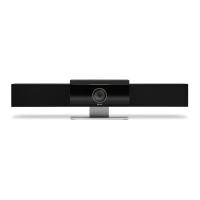Polycom CX5500 Unified Conference Station Administrator’s Guide 1.1.0
Polycom, Inc. 297
<pat/>
Patterns use a simple script language that allows different chord sets or wave files to be strung together
with periods of silence. The script language uses the instructions shown in the table Sound Effects
Pattern Types.
Sound Effects Pattern Types
Play sampled audio file n
se.pat.misc.SAMPLED_1.inst.1.type =”sampled” (sampled audio file instruction type)
se.pat.misc.SAMPLED_1.inst.1.value =”2” (specifies sampled audio file 2)
Play chord set n (d is optional and allows the chord set ON duration to
be overridden to d milliseconds)
se.pat.callProg.busyTone.inst.2.type = “chord” (chord set instruction type)
se.pat.callProg.busyTone.inst.2.value = “busyTone” (specifies sampled audio file busyTone)
se.pat.callProg.busyTone.inst.2.param = “2000” (override ON duration of chord set to 2000
milliseconds)
Play silence for d milliseconds (Rx audio is not muted)
Example:
se.pat.callProg.bargeIn.inst.3.type = “silence” (silence instruction type)
se.pat.callProg.bargeIn.inst.3.value = “300” (specifies silence is to last 300 milliseconds)
Advance n instructions and execute that instruction (n must be
negative and must not branch beyond the first instruction)
se.pat.callProg.alerting.inst.4.type = “branch” (branch instruction type)
se.pat.callProg.alerting.inst.4.value = “-2” (step back 2 instructions and execute that
instruction)
In the table Sound Effects Pattern Parameters, x is the pattern name, y is the instruction number. Both x
and y need to be sequential. There are three categories cat of sound effect patterns: callProg (Call
Progress Patterns), ringer (Ringer Patterns) and misc (Miscellaneous Patterns).
Sound Effects Pattern Parameters
Sound effects name, where cat is callProg, ringer, or misc.
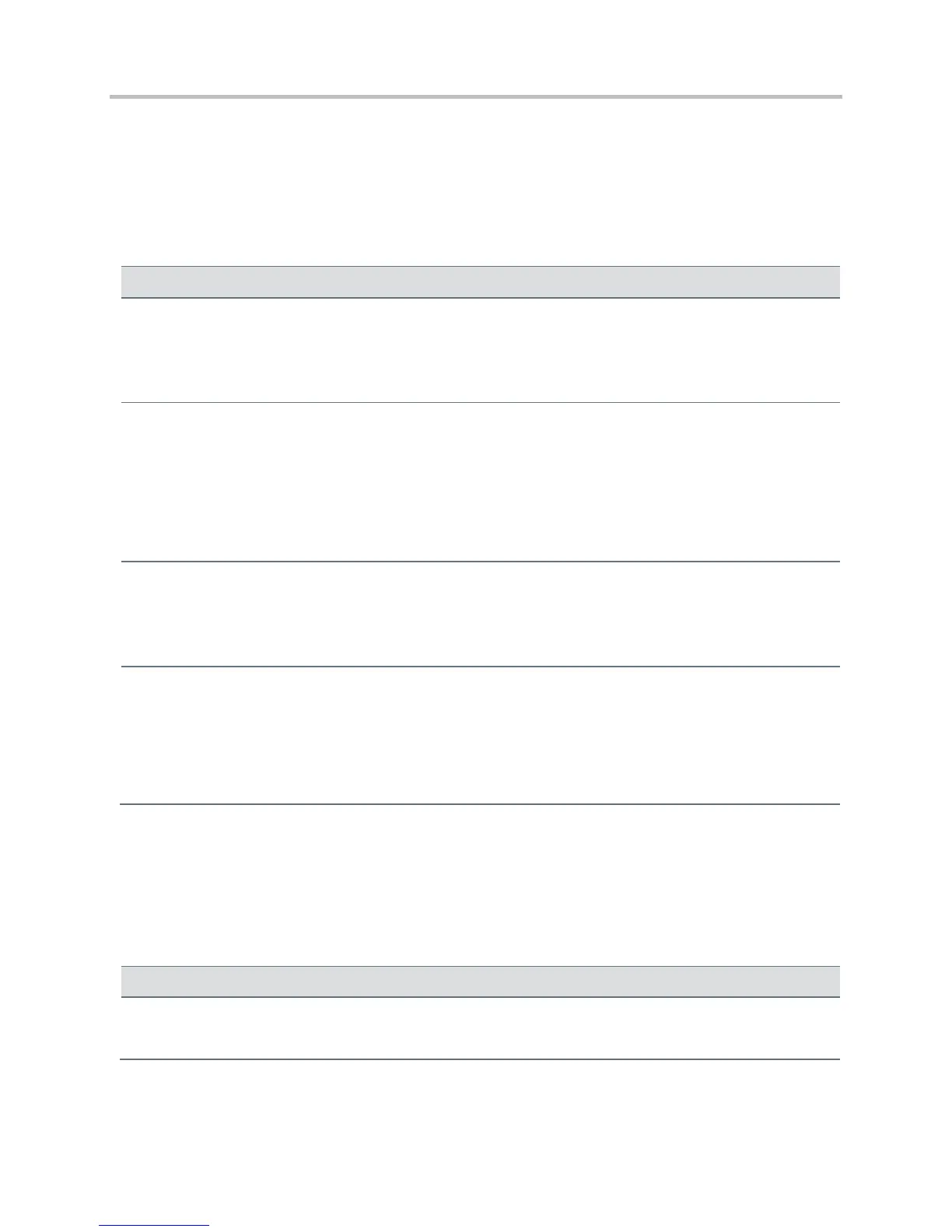